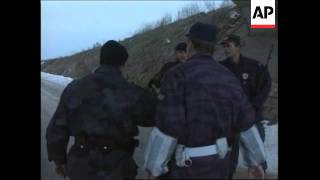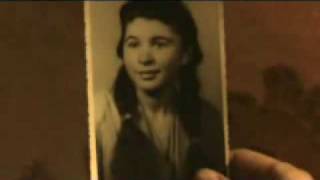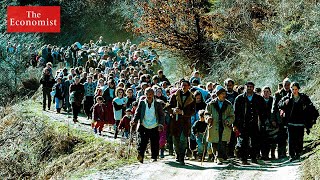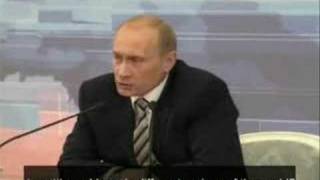Saturday, 20 December, 2025г.
















Где искать: по сайтам Запорожской области, статьи, видео ролики
пример: покупка автомобиля в Запорожье
With independence looming, Serbs dig up dead relatives for reburial
SHOTLIST
1. People entering graveyard
2. Kosovo Serb Dragica Besovic and her sister-in-law, Dusanka Ivanovic enter graveyard (with unidentified man) trying to locate the graves of their family
3. Besovic walking through graveyard
4. Tilt-up from damaged tombstone to Besovic looking at tombstone
5. Close-up of damaged grave
6. Besovic crosses herself as she looks at the grave of her husband
7. Close-up of Ivanovic crying
8. Besovic kisses tombstone
9. Close-up of damaged tombstone
10. Pan from graves to Ivanovic
11. SOUNDBITE (Serbian): Dragica Besovic, Kosovo Serb:
"Since there is nothing left here any more for me, I want to take my husband to be close to him, all together. I have the grave of my mother and father here, they will stay here."
12. Shovels in foreground, graves in background
13. SOUNDBITE (Serbian): Dusanka Ivanovic, Kosovo Serb:
"We live there, our house is there and everything we have is there. Do you want me to honestly tell you why I'm doing this? Because on the 3rd (April) they will be meeting in the UN and maybe the politics of the West are like this. It will be the way they say it will. They don't ask me or you. They now tell us to come back - where do you come back to when you don't know anyone anymore? A human is not an animal to live on its own."
14. Wide shot of grave diggers as they exhume the bodies
15. Besovic and Ivanovic watching gravediggers
16. Tilt-up from hole in ground to gravediggers carrying coffin
17. Ivanovic watching
18. Pan from the open grave to diggers carrying caskets
19. Various of gravediggers unearthing coffins
20. Gravedigger writing on coffin
21. Wide shot of coffin being carried through cemetery
22. Coffin being loaded into vehicle
23. Close-up of coffin
24. Besovic and Ivanovic walking through graveyard
STORYLINE
Eight years have passed since Dragica Besovic last set foot in Kosovo. She has returned to perform a terrible task: to unearth the bones of three generations of male relatives so she can take them to her new home in Serbia.
The 77-year-old Serb, who fled Kosovo as a refugee in 1999, has returned with her sister-in-law, Dusanka Ivanovic.
Fear drove Besovic away, but it also drew her back - fear that if the province gains independence later this year, as many expect, members of its ethnic Albanian majority will dig up her relatives' remains and scatter the bones.
Many other Serb families are also digging up their dead relatives. Their mission casts a shadow on UN, US and western European efforts to forge a multiethnic society in Kosovo, where mistrust runs deep and the scars of war have yet to heal.
"Since there is nothing left here any more for me, I want to take my husband to be close to him, " Besovic said at a cemetery in the western Kosovo town of Pec.
"I have the grave of my mother and father here, they will stay here," she added as gravediggers unearthed her husband's remains and those of other relatives for reburial outside Kosovo.
Many Serbs don't dare venture alone into Kosovo to visit a loved one's grave, and even those who come on organised tours aren't always able to pay their respects.
Most of Kosovo's Serbs fled the province after the end of Slobodan Milosevic's brutal 1998-99 crackdown on ethnic Albanian separatists.
An estimated 10-thousand ethnic Albanians were killed, more than one million forced out of their homes, and 2-thousand are still missing.
When the war ended, some Albanians avenged the deaths of their loved ones by targeting Serbs in reprisal attacks.
About 200-thousand Serbs fled, and only about 100-thousand remain in Kosovo, most in small enclaves where they live in isolation and fearing intimidation.
The plan is bitterly opposed by Serbia, which insists the province must remain within its borders.
You can license this story through AP Archive: http://www.aparchive.com/metadata/youtube/dffe3a44e552da4d1b8f359807211fa0
Find out more about AP Archive: http://www.aparchive.com/HowWeWork
Теги:
AP Archive 517681 dffe3a44e552da4d1b8f359807211fa0 Kosovo Graves Slobodan Milosevic Kosovo Serbia Eastern Europe
Похожие видео
Мой аккаунт


 У вашего броузера проблема в совместимости с HTML5
У вашего броузера проблема в совместимости с HTML5


